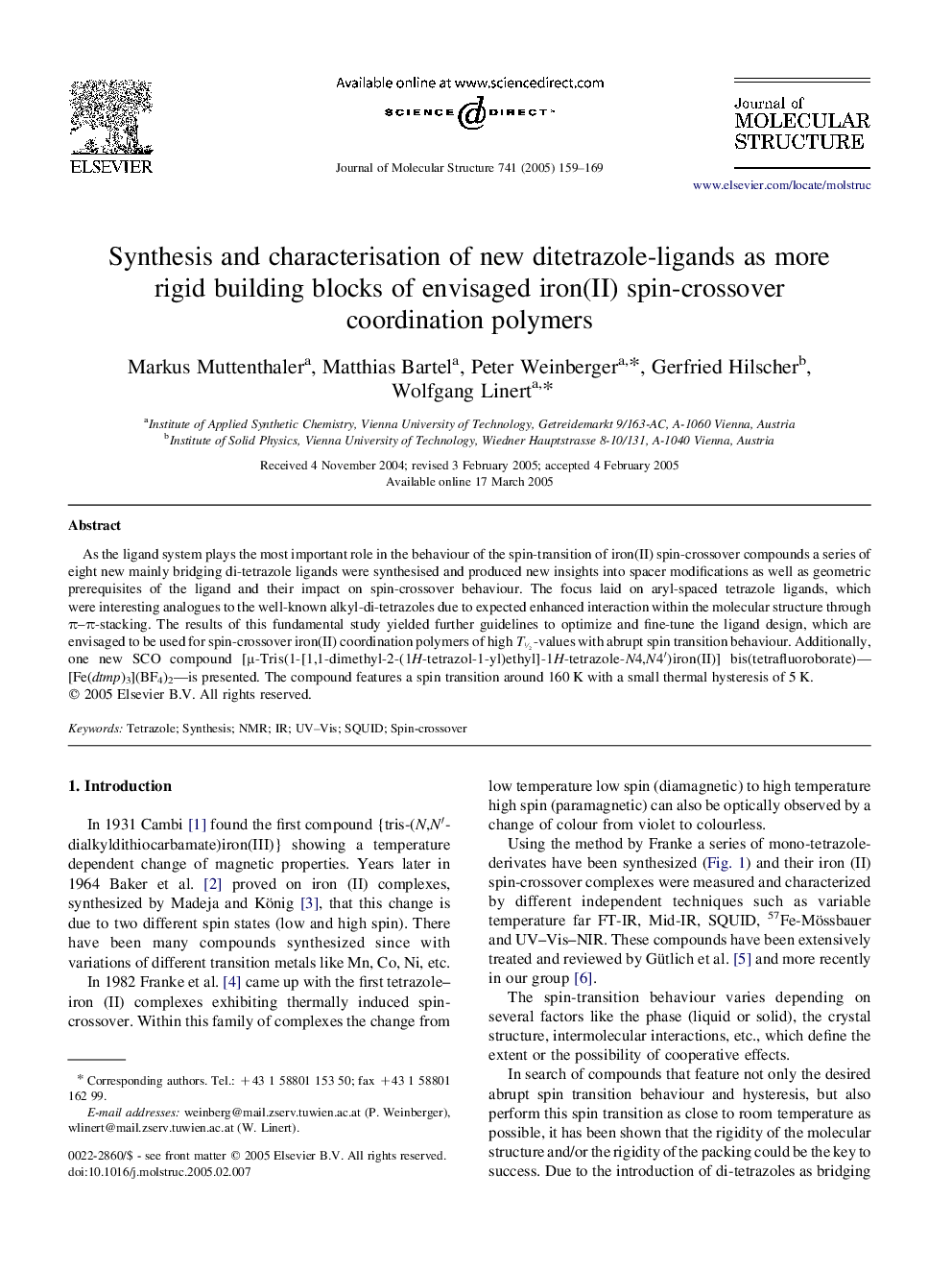| Article ID | Journal | Published Year | Pages | File Type |
|---|---|---|---|---|
| 9770222 | Journal of Molecular Structure | 2005 | 11 Pages |
Abstract
As the ligand system plays the most important role in the behaviour of the spin-transition of iron(II) spin-crossover compounds a series of eight new mainly bridging di-tetrazole ligands were synthesised and produced new insights into spacer modifications as well as geometric prerequisites of the ligand and their impact on spin-crossover behaviour. The focus laid on aryl-spaced tetrazole ligands, which were interesting analogues to the well-known alkyl-di-tetrazoles due to expected enhanced interaction within the molecular structure through Ï-Ï-stacking. The results of this fundamental study yielded further guidelines to optimize and fine-tune the ligand design, which are envisaged to be used for spin-crossover iron(II) coordination polymers of high T½-values with abrupt spin transition behaviour. Additionally, one new SCO compound [μ-Tris(1-[1,1-dimethyl-2-(1H-tetrazol-1-yl)ethyl]-1H-tetrazole-N4,N4â²)iron(II)] bis(tetrafluoroborate)-[Fe(dtmp)3](BF4)2-is presented. The compound features a spin transition around 160 K with a small thermal hysteresis of 5 K.
Related Topics
Physical Sciences and Engineering
Chemistry
Organic Chemistry
Authors
Markus Muttenthaler, Matthias Bartel, Peter Weinberger, Gerfried Hilscher, Wolfgang Linert,
